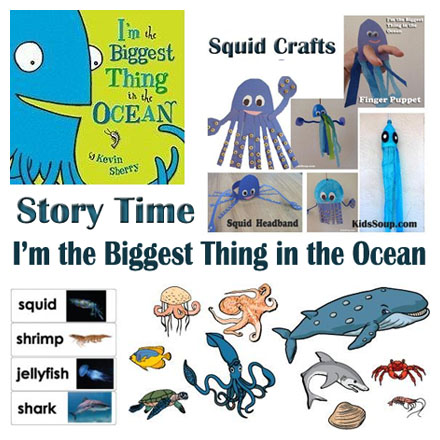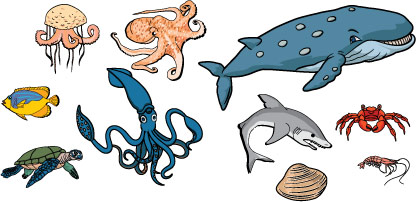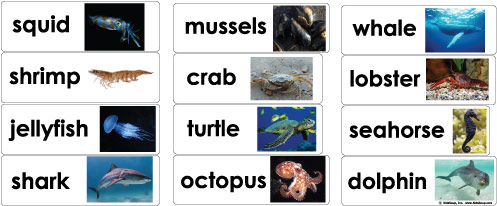The importance of instilling the concept of...

This playful book is written in simple, repetitive text, a perfect choice for emergent readers. The text is accompanied by bright, bold, illustrations as a boastful Giant Squid, who is exceptionally proud of his size, takes children on a tour of the ocean and introduces them to other animals that make the ocean their home: shrimp, clam, crab, turtle, jellyfish, octopus, shark, and eventually a big, blue whale. The story is light and fun with a humorous twist at the end. As you read this story aloud, engage children by asking questions and defining difficult vocabulary before, during, and after reading. Here, we share a few ideas.
Book:I'm The Biggest Thing in the Ocean!
Literature: Key Ideas and Details
RL.K.1 With prompting and support, ask and answer questions about key details in a text
Literature: Range of Reading and Level of Text Complexity
RL.K.10 Actively engage in group reading activities with purpose and understanding
Display the book cover and read the title, pointing to each word. Lead a brief discussion that allows children to activate background knowledge as they prepare to listen to the story.
During Reading:
As you read each page, point to each word. After reading through a few pages, ask if children can begin to recognize some of the words that repeat. Have volunteers name the words and write the words on a white board or chart paper:
Read the book through a second time and encourage children to read the text with you as you point to each word. Before turning pages, ask volunteers to identify specific words and ask questions about the letters and sounds in the animal words. For example,
After Reading:
Encourage children to form conclusions about the events in the story by asking the following questions:
Let children share their favorite parts of the story and why. Have them stand and shake out their sitting and listening muscles with a related movement or fingerplay activity.

“I’m a Giant Squid”
Recited to the tune of “I’m a Little Teapot”
by Erin Lassiter, KidsSoup, Inc.
I’m a Giant Squid, long and sleek (stretch arms above head and move body side to side)
Here are my arms (shake arms and one leg out in front on body)
Here is my beak (pinch fingers together on one hand and place in front of mouth)
When I start moving, hear me shout (place palms together and stretch out arms in front of body; make swimming motion)
“I’m really BIG, so you better watch out!” (Raise arms up and out and wiggle fingers on both hands)
Choose any of our squid crafts available inside our KidsSoup member site.

ocean: a large body of salt water
squid: a long ocean animal with 8 arms and 2 tentacles
shrimp: a small swimming ocean animal with a thin body, legs, and a shell covering
clam: a small ocean animal that lives inside a shell in mud or sand
crab: a clawed ocean animal with an outer shell that moves by crawling sideways
sea turtle: a shelled animal that swims in the ocean and lays eggs on the shore
jellyfish: an animal with a soft body and tentacles that floats in the ocean
octopus: an ocean animal with a soft body and 8 arms lined with suction cups
shark: a large animal with fins and a tail that swims in the ocean and has sharp teeth
whale: a large animal that lives in the ocean and breathes air through a blow hole on the top of its head

Review how each of the animals mentioned in the story might move. Let children provide suggestions and decide on how each animal will be acted out during the movement activity. Here are some suggestions:
Have volunteers provide examples.
Play music and call out the name of one of the animals. Encourage children to move like that animal. Continue until each animal has been named.
KidsSoup Resource Library
